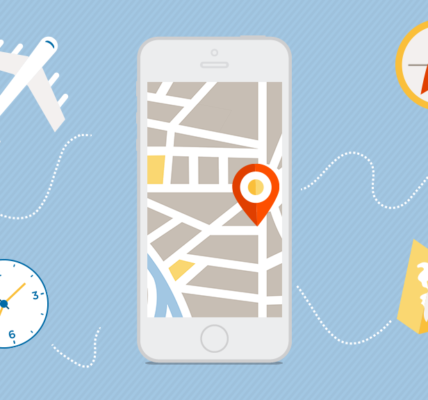
Occasionally, a new technology is introduced that disrupts the natural order of things. Apple’s iPad represents just such an innovation. The touchscreen display and navigation options make this computer a radical departure from the PC. [In this context, I am broadly defining the PC as either a desktop or laptop computer.]
With the iPad, you don’t have to use a trackpad—or mouse—to move a cursor around a screen. Instead, you use your fingers to touch and swipe the screen. In addition, the iPad is very light, weighing only 1.5 lbs (680 grams), and has a battery life of 9-10 hours, which is far greater than the battery life of the typical laptop computer. Combined, all of these features provide the user with a more direct and immediate relationship to computing: all cables, mice and other devices are gone. The iPad facilitates a “magical” experience, according to Steve Jobs. Certainly, it makes life easier for the customer.
Ease-of-use is one of the many reasons that the iPad has caught on like wildfire, becoming the biggest selling device in Apple’s history. For the quarter ending Dec 31st2011, the Cupertino-based juggernaut sold 15.4 million tablets, accounting for $9.1 billion in revenues or about 20% of the company’s total revenue. Compared with last year’s holiday quarter, tablet sales doubled.
We are witnessing what Harvard Business School’s Clayton Christensen calls a disruptive innovation. Typically, inventions that fall into this category have characteristics that are radically different from existing products; however, initially, they offer lower performance in areas that are important to mainstream customers. For example, compared to a laptop or PC, the original iPad’s processor was slow; storage space was limited; and it wasn’t equipped with a keyboard. But over the past couple of years, Apple has significantly improved the performance of its tablet computer. Here are some of the features contained within the new IPad, which was released today:
- High resolution retina display–2048×1536 pixels more than on an HD TV
- A dual core CPU twice as powerful as the A5 found in the iPad 2
- A rear iSight camera with 5MP sensor and advanced optics, including IR filter, autofocus, face detection, and white balance
- HD video recording (1080p resolution)
- Voice dictation (there’s a new key on the keyboard for speaking into the iPad)
- 4G LTE support: HSPA+ for up to 21Mbps or dual-carrier HSDPA for up to 42Mbps or LTE for a max of 72Mbps connectivity
- Battery life is 10 hours (9 for the 4G models)
Regarding the future, Steve Jobs used the metaphor of the PC as a truck, and the iPad–or tablet–as a car. America was originally an agrarian economy. Then, the truck was used for all tasks done on the farm. But as we developed into an urban economy, the car replaced the truck for many jobs.
The tablet will be increasingly used for consuming digital data—viewing videos and photos; reading news websites, feeds, and books; checking on e-mail & social media; and listening to music. In contrast, the PC will be used for heavy-duty tasks. One of you said it well: “typing a large document or programming a 1,000 lines of code is much easier with a full size, qwerty keyboard.” A PC with a blazingly fast processor, which is hooked up to a large display—including multi-monitor arrangements—can facilitate multitasking and productivity. Developers, professional photographers, graphic artists and hardcore gamers will probably continue to use the PC, at least in the near future. But to quote Jobs once again, “as we move away from the farm, the car started taking over.”
And the data appear to substantiate Job’s prediction. During 2010, when the iPad was introduced, sales of PC’s outnumbered sales of tablet computers by a ratio of 20 to one. In 2011, PC’s outsold iPads by a ratio of only six to one. Horace Dediu, an analyst with Asymco in Finland, predicts that tablet sales will surpass PC sales in 2013.
In conclusion, the iPad symbolizes much more than just simply an incremental improvement in technology. It is evolving to become a PC replacement for many applications. The PC will survive, but its market share will continue to decline vis-à-vis tablet computers. This is no different than what occurred 60 years ago when televisions were invented. As a result, the audience of people who listened to radio shows declined greatly. Although the radio has endured, its share of the overall listening audience is small in comparison to TV’s market share.
Here are other instances where new technologies displaced existing technologies:

How do you weigh in on this issue? Will Apple’s improvement of features and functionality enable the tablet computer to become a PC replacement?
